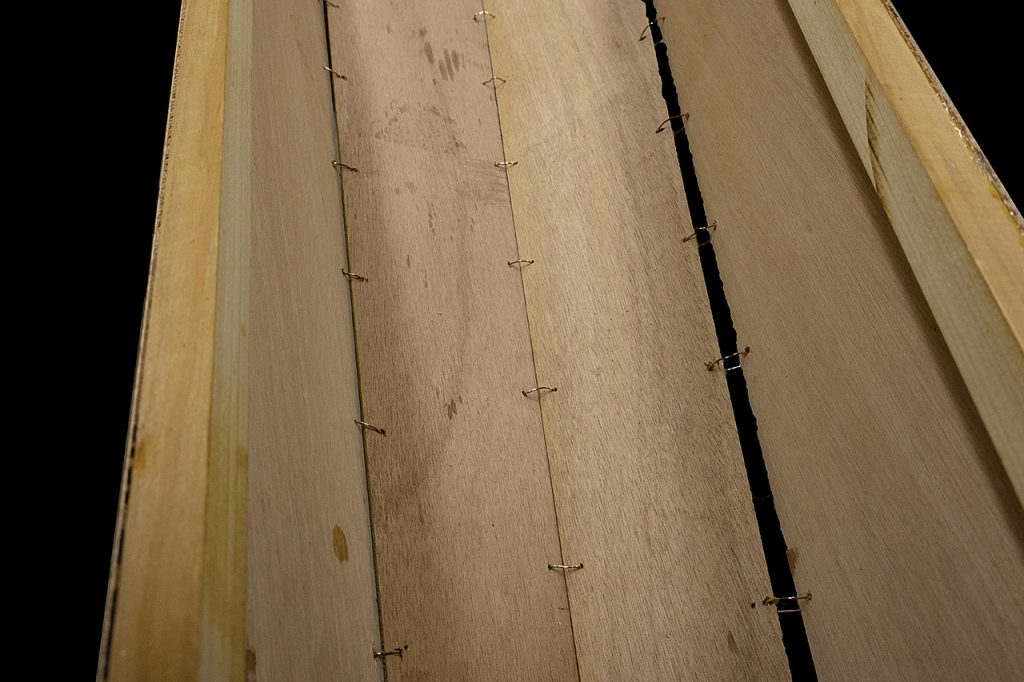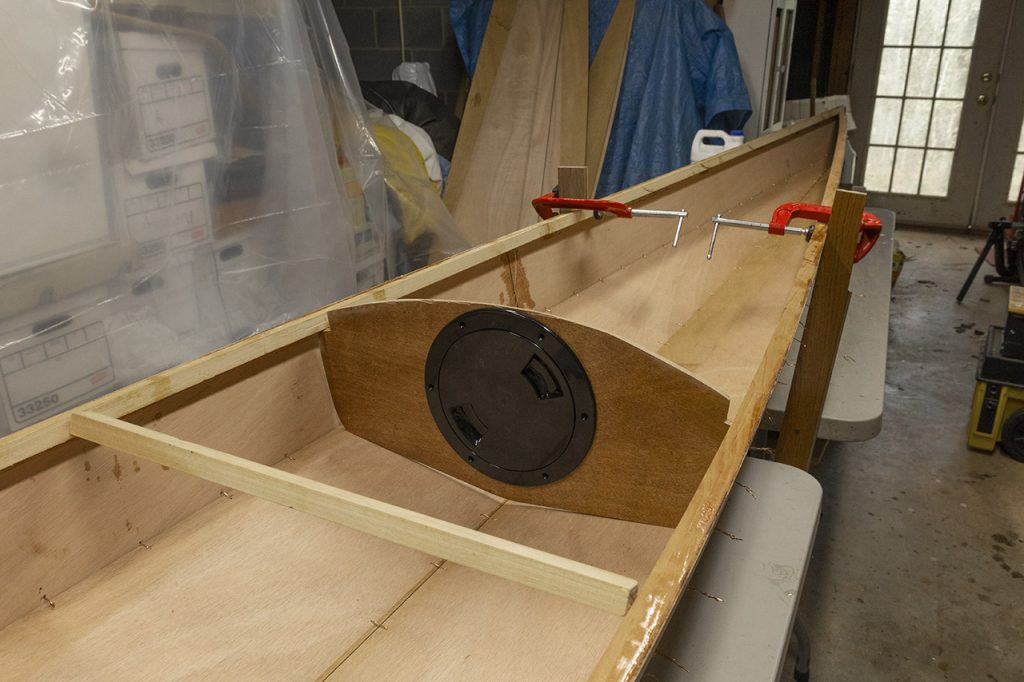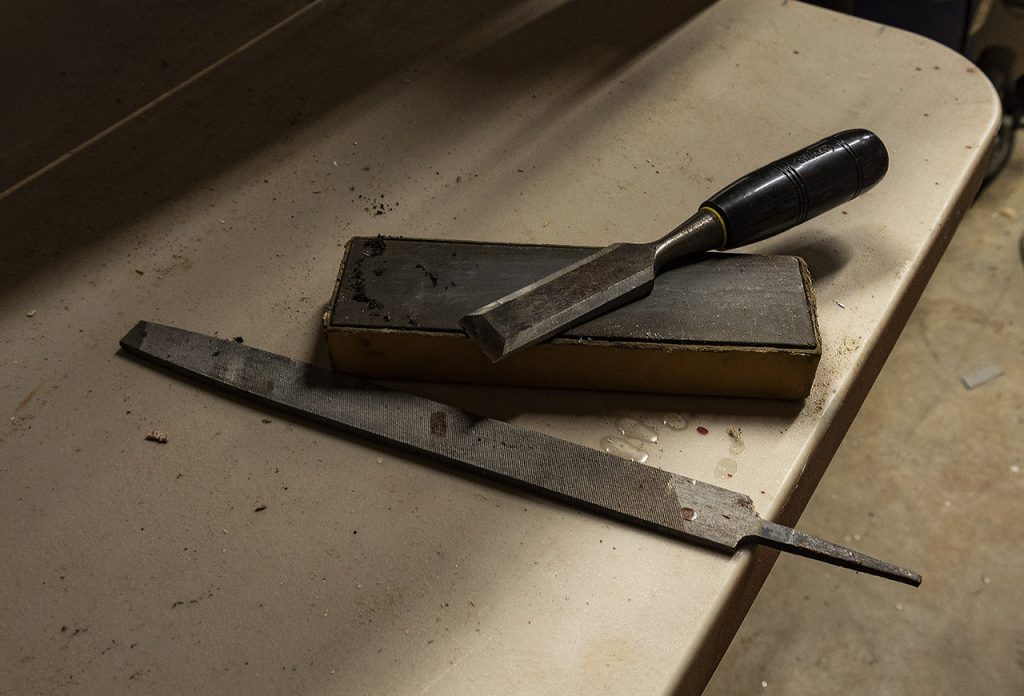Tightening the stitches worked wonders. Most gaps disappeared. The larger gaps at the bow and stern shrank, especially at the bow. Some judicious extra stitchery helped. I’m telling myself that thickened epoxy, aggressive sanding, and fiberglass can make all things right (the stern alignments concern me some, but I think nothing is so far out of bounds that I can’t “fix it in post)”.

tight stitches is not small.
…
The vertical ways (supports; they’re not “ways” but they deserve a more nautical name than “sticks”) seem more critical than the directions and sketches let on. If they squeeze the hull, and they can easily do so, then the bulkheads do not even come close to fitting. Relax the ways — or whatever they are — or clamp the boat higher up in the wider space of the diverging uprights, and the bulkheads are not nearly so hopelessly large for the stitched-up-tight hull. I am thinking about this before I do something that would require me to cut all new bulkheads. These will need more trimming, but exactly how much is yet to be decided. I may start cutting templates from cardboard to keep from making a serious mistake.
It occurs to me that a lot of time in boat building is spent being careful not to make a serious mistake.
The slight distortion in the stern is almost certainly due to imperfections in the taper cut on the sheer clamps. I released the screw holding them together and allowed the stern side panels to come together with less compression. Much better. It might be worthwhile to fiddle with the stitches in the last couple of feet to see if messing with their tension makes any difference to anything. I may add some wood in the form of a wedge when gluing the sheer clamps together (gluing them too soon is the serious mistake I didn’t make several days back).
After supper, I whittled some more on the bulkheads and got them to fit nicely in exactly the right positions from stem to stern. Good enough, I says, and wired them in place before I had time to think of something that would mess them up (see next paragraph, for example). They could have used a good sanding and another coat of epoxy, but there’s time and opportunity for that after they are locked in solidly.
Looking closely at the picture, below, I’m pretty sure it would be better if the sheer clamps pressed on the bulkheads rather than leaving the side panels to make contact; I’m not 100% certain either component should be transferring loads like that; I’ll consider adding some “bearing surfaces” to the hidden side to de-localize whatever stresses might get applied to the hull through collision or hard use. (Do you think I might be overthinking this? Well, I don’t know why this should be an exception to every damn thing I do.)

…
Why does a kit cut out with CNC routers require customizing the fit of the bulkheads? And not really small customization, either. I took half an inch off the top of the forward bulkhead and cut the notches significantly deeper on the aft one. Well, consider the way the side and bottom panels can come together and note that the free space between the inside of the bottom panel and the bottom of the sheer clamps can easily vary by at least the width of the inset for the stitching holes (3/8 inch) plus the thickness of the wood depending on whether the bottom panels butt against the side panels or vice versa. Other variables are surely in play. Anyway, the bulkheads are wired in where they belong; I hope they don’t come out again for the life of the boat.

Today’s lesson: keep your chisels sharp! It’s the difference between cutting wood and gnawing on it.
I followed the directions for checking winding, nudged the clamp holding one quarter of the boat, and checked again. That test looks really good to me. I’m letting the boat relax, settle, just sit overnight, and I’m re-reading the instruction booklet and watching some videos so as not to make a mistake with epoxy, from which there would be no going back.
Tomorrow
maybe I’ll get serious with epoxy and seam tape.